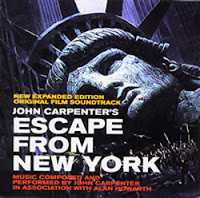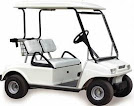aAn expanded version of this has been posted by FOX News on its website. CLICK HERE. New York City Mayor Bloomberg--himself a billionaire--proposes a new $8-a-day tax for the privilege of driving into Manhattan (unless you stay north of 86th Street--up toward Harlem).
New York City Mayor Bloomberg--himself a billionaire--proposes a new $8-a-day tax for the privilege of driving into Manhattan (unless you stay north of 86th Street--up toward Harlem).
For trucks, it's even worse--$21 a day.
The mayor calls it a "congestion fee". In fact, it's a tax and a penalty for using a motor vehicle. And the purpose is not to help pay for the roads and bridges used by drivers. Instead, hundreds of millions of dollars would be transferred annually to benefit the users of mass transit which is already heavily-subsidized by drivers and the general taxpayer. Overall, the plan would support about a $50-billion expansion of NYC's huge mass transit.
Their hope is that the media's efforts to stampede fear of global warming has changed the political environment. This audacious plan is being touted in the name of protecting the environment, hoping to disguise its true nature as a major new tax.
Mayor Bloomberg's Earth Day-timed announcement featured a video introduction by California Governor Arnold Schwarzenegger, the West Coast's Rockefeller Republican. That raises obvious questions of whether the Governator is ready to test similar ideas in California. British Prime Minister Tony Blair also made a video cameo appearance, saying “This would mark out New York as a global leader in halting climate change."
Because the NYC plan requires an intricate Big Brother-monitoring system to track every vehicle's movements, just building the high-tech infrastructure is estimated to cost an initial $225-million, and the federal government is already being suggested as the source for that money. The Bush Administration's Transportation Secretary, Mary E. Peters, didn't throw cold water on the notion with her response, "This plan is the kind of bold thinking leaders across the country need to embrace if we hope to win the battle against traffic congestion."
Fortunately, that one sentence was the entirety of the Secretary's statement, leaving plenty of wiggle room as the politics of this plan mature.
Rising fuel prices already provide free-market disincentives for drivers, but if they switch to mass transit there's fewer drivers left to subsidize that transit--thus the $8-per-day fee to make up the difference and keep the subsidies growing.
We're hearing angry outcries already from those who will be hurt by this fee. But imagine the even-larger outcry if the Mayor had proposed funding the mass transit expansion by raising the fares for using the subway or buses! This "farebox recovery rate" in New York City covers about half that system's annual operating costs--and none of the capital expenses--leading to an annual deficit in the billion-dollar neighborhood. Even so, those riders pay a larger percentage of the operating costs than in any other transit system in America. Still, the users of mass transit wouldn't be the ones paying for this $50-billion capital expansion. Traffic congestion is a serious problem. The U.S. Transportation Department has suggested various approaches, including what is called "value pricing", whereby users of toll roads would pay higher rates during peak periods.
Traffic congestion is a serious problem. The U.S. Transportation Department has suggested various approaches, including what is called "value pricing", whereby users of toll roads would pay higher rates during peak periods.
However, true value pricing typically would use the extra fees to improve roads and bridges to handle the traffic. Bloomberg's proposal instead would take the money paid by autos and trucks and send it to further subsidize mass-transit.
Usually overlooked in transportation debates is the fact that automobile users already pay a heavy government burden for daring to favor the freedom and flexibility that automobiles provide. One-sixth of the federal fuel taxes paid by drivers is diverted to mass transit already.
The almost-all Democratic NYC Congressional delegation can be expected to push for federal funding to implement this plan, with significant pushback to be hoped for both from Republicans and from Democrats in other parts of the country.
In the movie, people wanted out, not in!
aRead Mayor Bloomberg's plan here.
aAmtrak and mass transit are heavily-subsized; aviation has a much-smaller subsidy; and drivers get a "negative subsidy" as fuel taxes are siphoned off to mass transit. The Bureau of Transportation Statistics publishes the numbers here. On average, transit receives over $5-billion per year in net federal subsidies, while highway users paid about $8-billion more than is plowed back into roads. On a passenger-mile basis, passenger rail (Amtrak) is the most heavily subsidized mode, followed by mass transit, and (distantly) by aviation. But users of autos and trucks pay extra rather than being subsized.
skip to main |
skip to sidebar
Ernest Istook served 14 years as a U.S. Congressman from Oklahoma. He is now in recovery.
"One of the most astute political observers and commentators in the nation's capital."
About Ernest
After serving 14 years as a U.S. Congressman, Ernest is now in recovery. He represented Oklahoma's 5th Congressional District.
Ernest was rated as one of the top conservatives in Congress and was a founder of the Republican Study Committee, the leading organization of conservatives in the U.S. House.
Now he's a Distinguished Fellow at The Heritage Foundation, talk radio host and practicing attorney. Ernest has a regular column at Human Events and formerly for World Net Daily, and also writes for other publications. His daily radio commentaries are heard on the Bott Radio Network.
Ernest has been a frequent guest on programs that include FOX News, CNN, ABC's World News Tonight and 20-20, Crossfire, and others.
He's National Chairman of Save Our Secret Ballots and an advisory board member for Operation Kids.
Ernest has been married to Judy since 1973; they have five children and 11 grandchildren. Ernest believes strongly in the Boy Scouts of America; he's a former Scoutmaster and both his sons are Eagle Scouts.
He is an active member of the Church of Jesus Christ of Latter-day Saints.
Blog Index
-
▼
2007
(36)
-
▼
April
(14)
- Dems' V-P Choice Opposes Party on Iraq
- Lose Money from Home In Your Spare Time!
- Iraq & A-G Controversies Keep Dems Afloat
- New Website Plans to Hold Democrats Accountable
- Why Alberto Gonzales Is Safe
- See Manhattan For Just $8 A Day!!
- Inner-City Charter School Hits Home Run
- "Sticks and Stones . . .
- Far Left Demands Billions More in Social Spending
- Money to Burn
- Pro-Life Victory Raises Stakes in '08 Race
- Virginia Tech Horror--Will We Learn the Right Less...
- New Congress Looks Away As Taxpayers Get Mugged
- Bush Lays Down A Marker to Congress
-
▼
April
(14)
Headlines from Newsmax
Links
Articles by Ernest
Blame It on Global Warming!
Ever try to count all the crazy things that the media claim are caused by global warming? You should read this!
